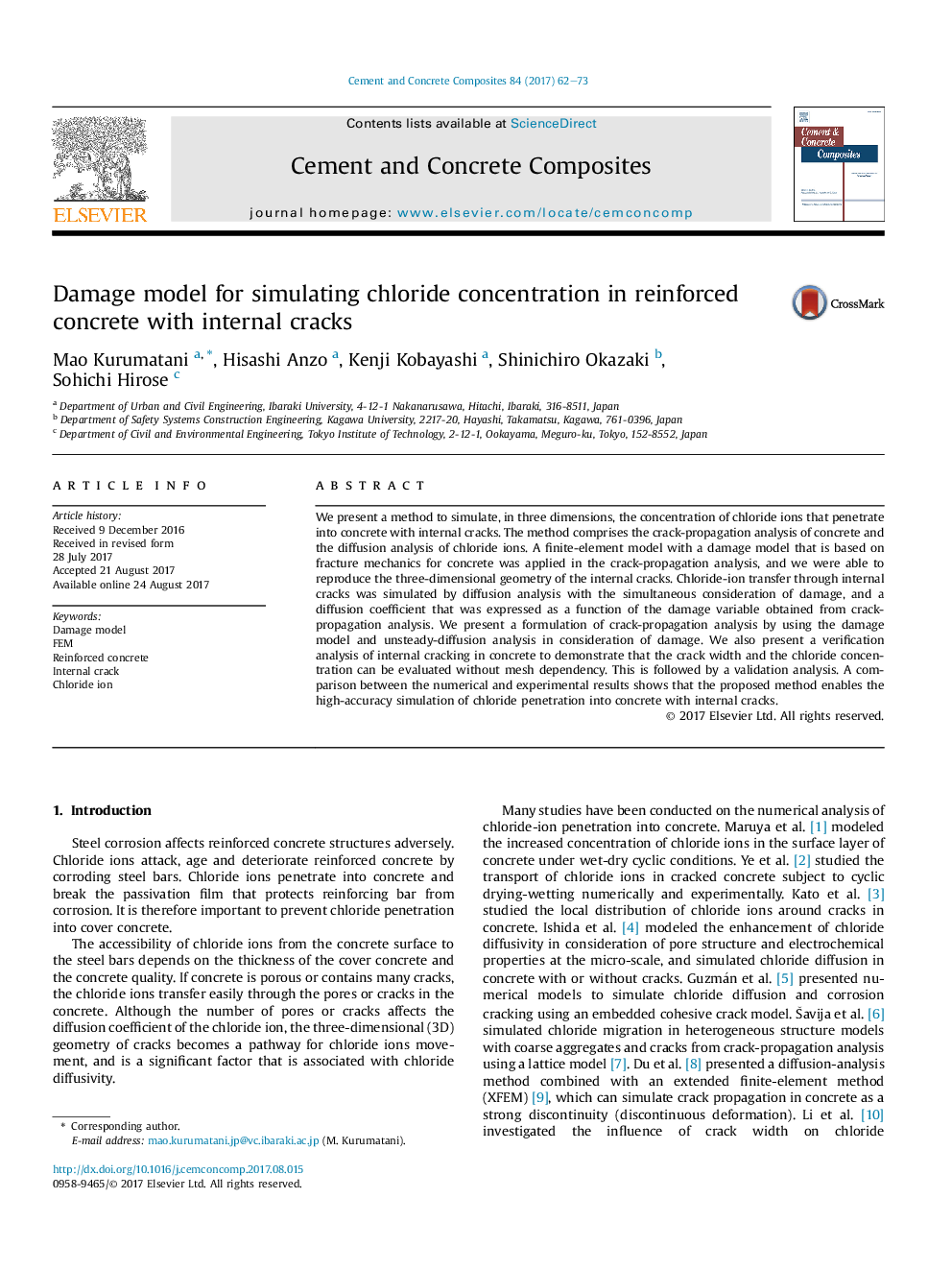| Article ID | Journal | Published Year | Pages | File Type |
|---|---|---|---|---|
| 5436750 | Cement and Concrete Composites | 2017 | 12 Pages |
Abstract
We present a method to simulate, in three dimensions, the concentration of chloride ions that penetrate into concrete with internal cracks. The method comprises the crack-propagation analysis of concrete and the diffusion analysis of chloride ions. A finite-element model with a damage model that is based on fracture mechanics for concrete was applied in the crack-propagation analysis, and we were able to reproduce the three-dimensional geometry of the internal cracks. Chloride-ion transfer through internal cracks was simulated by diffusion analysis with the simultaneous consideration of damage, and a diffusion coefficient that was expressed as a function of the damage variable obtained from crack-propagation analysis. We present a formulation of crack-propagation analysis by using the damage model and unsteady-diffusion analysis in consideration of damage. We also present a verification analysis of internal cracking in concrete to demonstrate that the crack width and the chloride concentration can be evaluated without mesh dependency. This is followed by a validation analysis. A comparison between the numerical and experimental results shows that the proposed method enables the high-accuracy simulation of chloride penetration into concrete with internal cracks.
Related Topics
Physical Sciences and Engineering
Engineering
Industrial and Manufacturing Engineering
Authors
Mao Kurumatani, Hisashi Anzo, Kenji Kobayashi, Shinichiro Okazaki, Sohichi Hirose,
